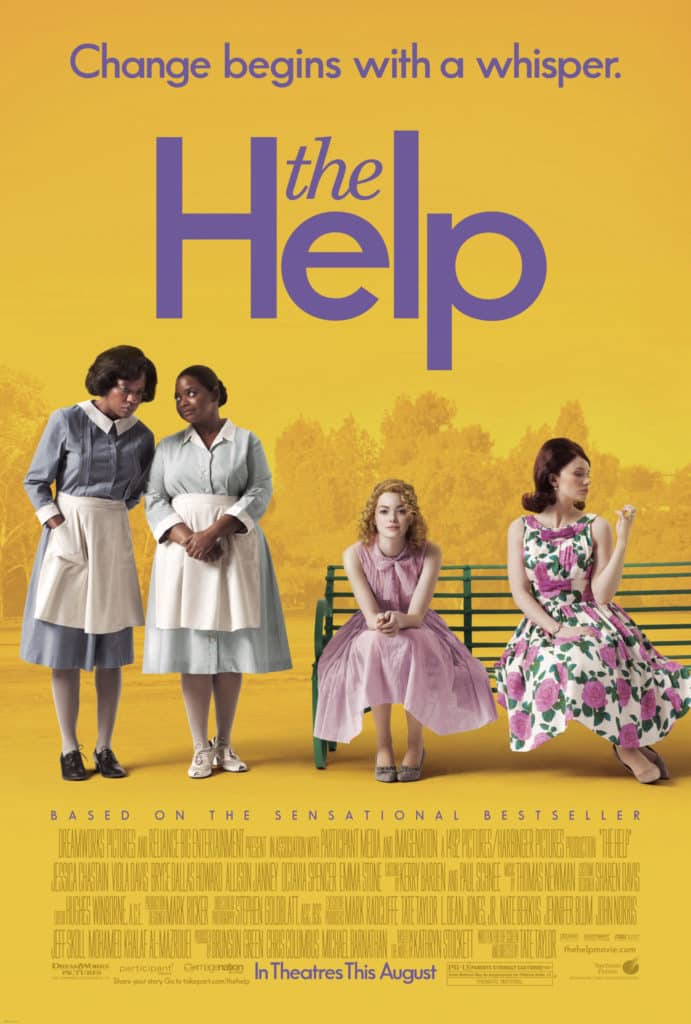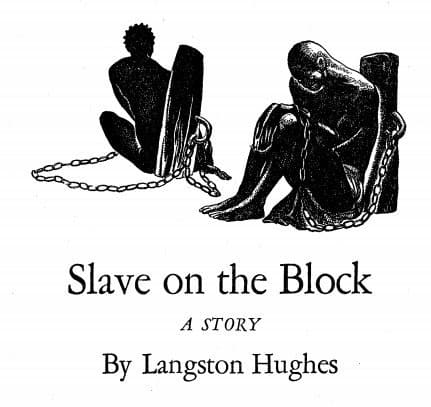
Both Tate Taylor’s 2011 film, ‘The Help’, and Langston Hughes’ short story ‘Slave on the Block’ express the issue of racism against African Americans in history, albeit exploring the topic in different ways. Taylor’s film homes in on the incredibly hostile and violent attitudes towards black people in the past by telling the story of poor maids in small-town America during the 1950s.
Hughes’ short story, on the other hand, chooses to address a politer and more indirect form of racism, depicting a young white couple living in Harlem, New York. Believing themselves to be tolerant and ‘hip’, the Carraways mean well, and have an appreciation of black culture, but their attitude is somewhat condescending, and fundamentally racist.
Through the usage of various techniques, both texts explore the issues and in doing so provide a detailed account of the eras.
Langston Hughes is often considered one of the most influential and important African American writers in history, so it comes as no surprise that his short story, ‘Slave on the Block’ explores the issue of racism with subtlety and touches on a more complex and sometimes difficult to identify the racism.
The story deals with the lives of a young white couple, the Carraways, and their black servants, Luther and Mattie. Unlike ‘The Help’, ‘Slave on the Block’ shows a less direct form of racism, showing the Carraways as well-meaning, but ultimately quite racist, even if they are unaware of it.
Though well-meaning in their fascination with black culture, the Carraways ultimately have a patronizing view of African Americans, viewing them less like humans and more as exotic pets to be studied and appreciated.
It is a largely tokenistic acceptance. Hughes uses numerous techniques to communicate this, such as metaphor, with the line “He is the jungle”, spoken by Anne Carraway upon young Luther’s arrival at their home. This line communicates the sense of objectification, almost novelty, with which the Carraways treat African Americans.
The young couple fetishizes African Americans, views them as toys to be played with and fawned over. The dialogue is also peppered with racist language. Another example of the Carraways’ inherent racism is in the final scene, when Luther and Mattie, tired of being the Carraways’ playthings, stand up to Michael’s mother. Mrs. Carraway’s obsession with painting Luther is also indicative of the extreme fetishization of African Americans she is so deeply engaged in.
She feels she has to capture Luther’s “essence”, but not as a man, or even as a ‘negro’, but rather as a quality, a token. An argument ensues and whatever veneer of tolerance and respect Michael has possessed until this point in the story is totally dissipated as he takes a stand beside his mother, ordering Luther to leave with the words, “Be calm. I’ll discharge him… Go! Go, go!”. Hughes’ effectively displays through the use of various techniques and story elements how despite good intentions and a self-image of tolerance, the Carraways cannot abandon their own racist qualities.

Racism is a major theme in ‘The Help’. It is a concept explored throughout and expressed through various techniques that also clarifies the context by providing an analysis of one of the setting’s darkest aspects.
Not only does Taylor show the extreme racism and discrimination experienced by poor black people repeatedly, but also from various perspectives, and thus provides an illuminating account of the context.
Taylor uses many techniques to communicate this, such as narration, with Aibileen’s opening narration “I work 95 cents an hour” revealing the social hierarchy that has been established, maintaining a massive gap between rich white elite and poor black people. The film is also interspersed with dialogue that highlights racism, such as the line “she’s just upset because the n*ggers use the same bathrooms as us”.
This quote shows the casual racism and sense of everyday bigotry that was present in the society at the time. Toilets are a recurring symbol in the film as Hilly, the main antagonist, constantly tries to separate the usage of toilets between white and black people. At a point in the film, Aibileen is forced to use a separate toilet. This reveals the discriminatory and racist attitudes that were so broadly accepted at the time in everyday society and permeated even the most basic aspects of a black person’s life.
Furthermore, the film uses framing as a technique, communicating the ironic inequality of the era’s brutal and corrupt justice system. Approximately 90 minutes into the film, Yule May, a maid working for Hilly, is arrested for stealing a ring. She is brutally dragged away from a bus stop and held down before being clubbed over the head. We watch the scene from inside Hilly’s car, who is parked just down the street.
The distance from the brutal act and the fact that we see it through the glass of the windshield communicates the sense of detachment and cruel pleasure Hilly feels at this supposed act of justice as if she is observing a piece of entertainment through a screen. All throughout the film, Taylor uses techniques and story elements to show the inherent racism within 1950s America and by showing the film through numerous perspectives, manages to further explore and critique the context.
In conclusion, it is clear that both texts and their respective composers have managed to effectively outline different aspects of the issue of racism against black people in American history, illuminating a context entirely different from our own and discussing a significant issue that still plagues many today. ‘The Help’ chooses to clearly engage overt and extreme racism, and ‘Slave on the Block’ explores a more subtle and covert form of racism, though both use a variety of techniques and narrative elements to add texture and richness to their stories.
